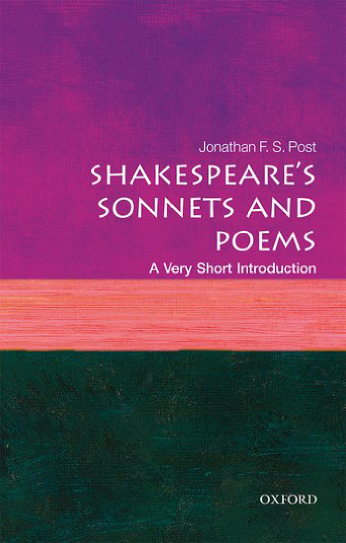By Jonathan FS Post
Published by Oxford University Press
Venus and Adonis (1593) he argues, was partly a response to an outbreak of plague which closed the theatres – and Shakespeare needed to make some money. So he wrote an erotic, narrative poem, inspired by Ovid. Post discusses the poem’s and merits, qualities by looking closely at jey stanzas before going on to give The Rape of Lucrece similar treatment.
Then he turns to the 154 sonnets, generally much better known, quoted from and discussed than the longer poems. Along with the time honoured question of whether of not we should try to read the sonnets as a roman a clef and identify the people (who may be imaginary) they seem to be addressed to, Post is interesting on the circumstances of the publication of the sonnets in 1609. He then discusses the developing sonnet form and its origins. Proceeding to individual sonnets such as “Let us not to the marriage of true minds” (sonnet 116) he comments “… there is no single way to read a Shakespeare sonnet …” But that may not be true of sonnets 135 and 136 in which he puns on his own name and packs in more double entendres than a Carry On film.
At the end of this book you will a) know much more about Shakepeare’s sonnets and poems than you did before and b) want to read or reread some of these compelling works which sometimes shed light on Shakespeare’s drama as well as being fascinating in their own right.



